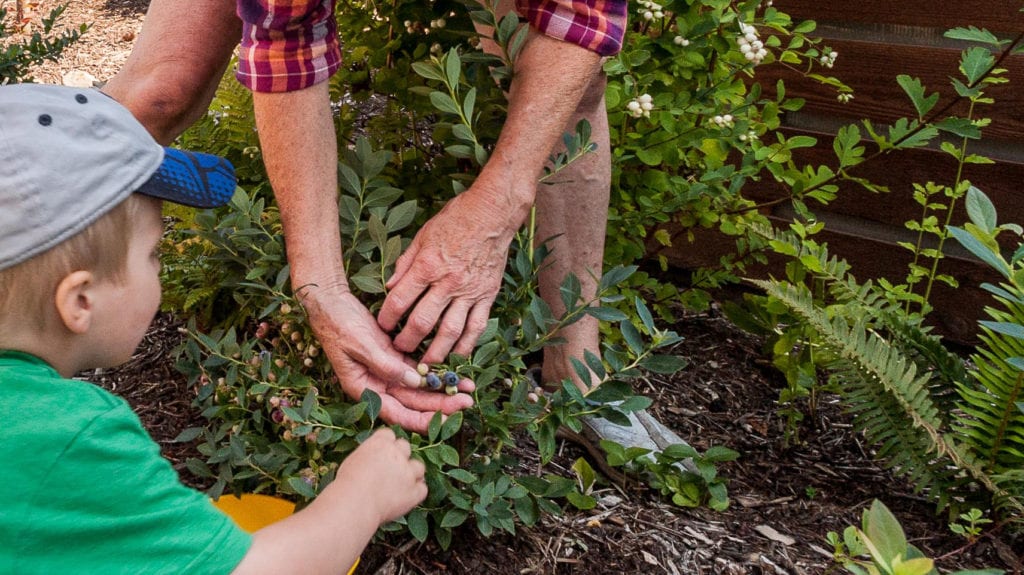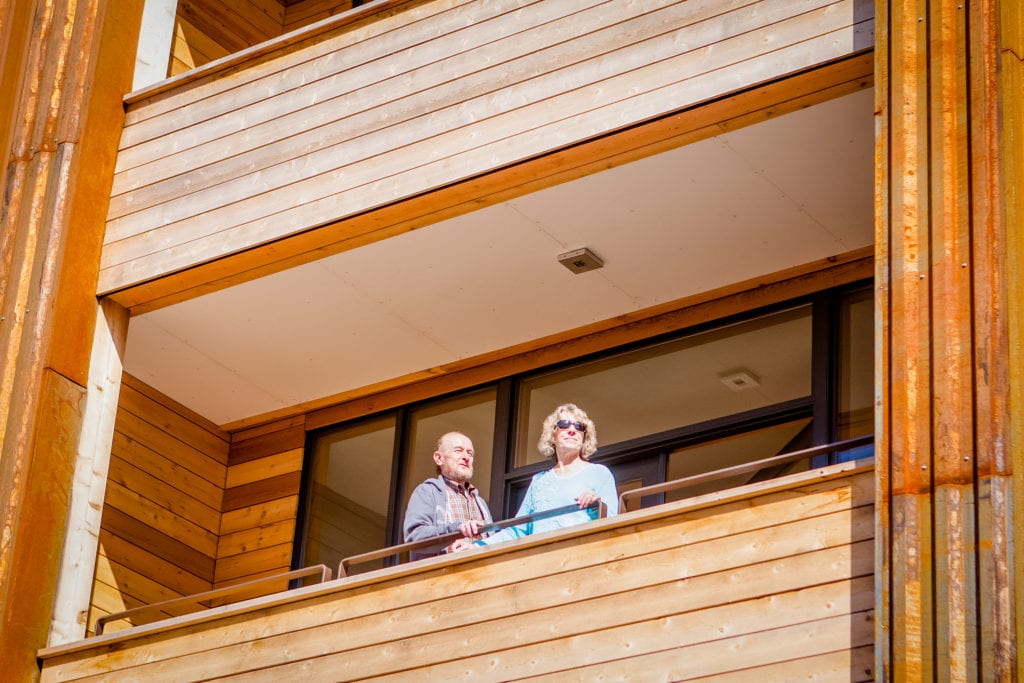The most comfortable retirement home is your own home.
On this point, older Americans widely agree: three-quarters surveyed say their number one goal is to stay in their own home as long as possible, in the familiar environment of connections, routines, heirlooms, memories, and friendships.
Independent living is a primary concern for both the older generation and their adult children, studies show. As we become older, it does become more difficult to move around the house, this is where some accidents can happen. When living alone, it can be even more dangerous as no one will know if anything does happen. This is why a lot of older people do eventually decide to move into an independent living community, like La Posada, where they can experience the benefits of living alone, whilst also having people on-site to help them if they need it. These communities are often ideal for people who may have retired alone, giving them the opportunity to make new friends and live with minimal help. These communities often come with housing that makes daily living easy and accessible for residents, as they have multiple mobility and accessibility options. For instance, you can see how assisted bathing solutions could help you here.

“Aging in place” has become the mantra for “baby boomers” and those who follow, describing a long-term goal once aspirational and now, at Grow Community, quite reachable.
“From a real estate perspective, we are seeing that boomer are a group that expects sustainability, community, and simplicity and wishes to live those values,” says Greg Lotakis, Grow Community development manager. “I believe that many of our buyers want to ‘live intentionally in a community,’ and it seems they are choosing to invest in a place where they can enjoy aging in place while living intentionally.”
Maintaining a healthy generational mix is a foundational goal of the Grow project.
Helping residents age in place — and keeping older homeowners an active, vital part of the social blend — guides the layout and amenities. Long-term accessibility is being built into new Grove and Park neighborhoods from the ground up.
That starts with single-level living in most units, keeping bedrooms, kitchen, bathrooms and utility space united on a single floor. Residents will have no cumbersome trips up and downstairs throughout the day.
On the outside, elevators connect underground parking areas with the entryways of each home.

Asani LLC, hired to develop Grow Community, worked to provide as much of the accessibility options into the design as possible. Features like Walk-in showers large enough for seating, open floor plans with minimal hallways, and taller comfort toilets are standard design elements at Grow Community. These can be enjoyed at any age and have been identified as key to independent living.
Grow Community is in the vanguard among residential projects bringing innovative strategies for independent living to market.
Situated in the heart of Winslow town center, Grow homes are close to grocers, restaurants, merchants and professional services, eliminating the need for regular automobile use.
A community center will allow neighborhood activities, while being flexible enough to fit the communities own programming desires. The eight-acre grounds boast spacious community gardens and gathering places.
Together these amenities fulfill goals identified by Congress in 2006 with reauthorization of the Older Americans Act, which urged locally based initiatives to meet aging citizens’ needs including services, social opportunities and recreation.
“It’s all part of our goal to create an intergenerational community, which has been our thinking from the beginning,” Lotakis says.
Aging in place also makes sense for seniors for whom long-term financial independence is a paramount concern.

The average cost of residence in an assisted living facility, for one bedroom and single occupancy, is approaching $40,000 per year, the Association for the Advancement of Retired Persons reports – a prohibitive amount for fixed-income seniors, who have already spent years building up equity in their own home.
The multigenerational family under one roof is another American trend.
A significant number of older residents have had a grown son or daughter, often with children of their own, move back in. In these families, the younger generations themselves become a resource for aging in place – not an option if their elders have moved into retirement homes or assisted living facilities.
With spacious two- and three-bedroom floor plans, Grow Community’s new Grove and Park neighborhoods anticipate these needs for a range of homebuyers, beginning with those in middle age who are looking to downsize and settle in for the long term.
For those already in their senior years, Grow Community offers some very good reasons to move just one more time.

Construction Update: Autumn settles in, Grow construction strides on
/in Building The Future, Construction Updates, Grow News, News at Grow, The Homes /by Grow TeamLeaves are turning in the Grove as our second neighborhood settles into autumn, with completion due before the darker months descend.
The Tsuga multifamily building pushes forward at a steady pace with completion of half the units by end of September, and the remainder the following month.The last Woodland Home at the south end of the grounds is also scheduled for a September wrapup and occupancy.
Final landscaping around the Grove will begin mid-September, with construction activity quieted down by Halloween.
The Park’s central greenway is now being graded and stabilized for the rainy season, with “Fleur de Lawn” field and landscaping to begin in the spring of 2017.
Bridging the Grove and the Park is our Community Center, and permits are now in hand with foundation and framing coming very soon?
Summer draws us to the Park
/in Building The Future, Construction Updates, Design, Grow News, News at Grow, The Homes /by Grow TeamYou can’t say Grow without Community – and our next phase, the Park, puts an exclamation point on it!
Elsewhere in the Park, midsummer finds foundations for the Sage and Lilac buildings are complete, with framing to begin next week. We expect framing for both structures to go up quickly, as we’re “panelizing” the construction to reduce onsite waste.
The Trillium multifamily building, which will anchor the south end of the grounds, is going through final designs and should be in for city review soon.
Meanwhile our second phase, the Grove, begins to wind down with ongoing move-ins and final wrap-up set for fall.
Grow recently “went live” on the Multiple Listing Service through Windermere, and demand is hot! Several homes went under contract within hours, and a flurry of new inquiries rolled in from prospective buyers.
Three flavors of multifamily solar at Grow Community
/in Building The Future, Carbon Free, Construction Updates, Design, Energy, Form & Function, Grow News, News at Grow, One Planet Living, The Homes /by Grow TeamCondos, apartments, townhomes – three flavors of multifamily construction, each with its own challenges for reaping the power, and financial benefits, of solar investment.
Asani development company is tackling all three at once at Grow Community.
On buildings dubbed the Salal, the Juniper and the Elan, now complete in the project’s expansive second phase, solar arrays will benefit both homebuyers and renters alike.
One roof apiece, with many beneficiaries beneath.
The Salal condominiums, with 12 units spread over three stories, is effectively a “community solar” project on a rooftop. Solar was included in the purchase price – no option – and incentives from the State of Washington will be apportioned equally among condominium owners, with each owning a one-twelfth interest in the array.
Asani worked with state officials and the local utility provider to craft a program that satisfies the complicated provisions of Washington law.
The opening was a provision allowing common use of single roof for solar in multifamily buildings. Asani banked on prospective buyers seeing shared solar as a good investment as they bought their condo units, one that promised annual paybacks while lowering operational costs of their building through solar harvest.
Solar was designed into the Salal building. A single production meter monitors total system output, while 12 sub-meters track consumption in individual units for utility billing.
Buyers are rolling the cost of solar, about $15,000 per unit, into their mortgages to take advantage of low interest rates at the time of purchase.
“We wanted it very clean and divisible by all the owners,” Lotakis said. “I think it would be pretty difficult for six, 10, 12 people to come together and agree upon how the system would work after the fact. This gave us a chance to just deliver it.”
Lotakis expects the 44kW array to produce about $1,500 in incentives per unit annually – cumulatively much higher than the state’s $5,000 cap on incentives for a single-family residence.
Next door at the 12-unit Juniper apartment building, the 44kW rooftop array is similar but the equation is different. Renters will enjoy the benefits of solar production through net-metering, but not the annual state solar rebate. That will go to the building’s single owner, and will max out at the state’s $5,000 cap.
Growing neighborhood solar
From project inception, Asani set out to build the most environmentally friendly development possible.
Relentless sourcing of renewable materials and low-impact fixtures, and close connection to the island’s town center, have positioned Grow Community in the marketplace for healthy lifestyle-conscious buyers.
The project’s first phase is noted for its shared pea-patch gardens and winding footpaths through close-set homes. The second and third phases are oriented around a woodland grove and open greenway.
The project has earned recognition in national magazines and won awards from local and national homebuilder associations. It is only the second planned community in North America to be certified under the One Planet Living standards.
Asani has also showcased Made In Washington components to support the state’s solar industry.
Modules at the Salal are by Itek Energy of Bellingham, while the Juniper and Elan arrays include APsystems microinverters manufactured and distributed by Blue Frog Solar of Poulsbo.
Using a mix of in-state and out-of-state components allows Asani to achieve different price points for buyers while optimizing local incentives where possible.
Lotakis cautions that Grow Community’s multifamily solar program relies on particularities in Washington law. Multifamily programs elsewhere would face their own challenges, although he believes Grow offers a useful model for developers nationwide to consider.
With the Salal building only recently certified for occupancy, new residents have no comparative data on their energy savings. But the solar component was attractive, as it has been to buyers throughout the three-neighborhood, 142-home project due to be completed in late 2017.
“Solar was a factor,” one new resident said, “along with a development that encourages a sense of community.”
Between the federal tax credit and annual rebates from the state, Lotakis said, owners buying into the Salal condominiums could have their share of the common array paid off within five years.
“Those production checks will be like a dividend.”
The Grove is wrapping up, now on to the Park
/in Building The Future, Construction Updates, Design, Form & Function, Grow News, News at Grow, The Homes /by Grow TeamSummer finds us buttoning up – that is, putting the finishing touches on Grow Community’s second neighborhood, the Grove.
Setting the pace is the Juniper at the north end of the grounds. New residents are now moving in, and the rooftop solar system is online and producing energy to offset the building’s needs. The largest planned solar community in Washington state keeps raising the bar!
The Woodland Homes at the south end of the Grove are nearing completion and should be finished by August. All of our buyers to date are adding solar, and you could be next – one home remains available, with an expansive 400 sf. outdoor deck among its many fine features and appointments.
And if you’ve not visited the Grove lately, you’ve missed the generous plantings that give this neighborhood its name. Landscape touchup is slated for the end of summer as the swath of young trees and shrubs begin to settle in for the cooler months.
Attention now turns to our third and final neighborhood, the Park. Work has commenced on the Sage and Lilac, where foundations are underway and should be completed by the end of this month – framing to follow, and pre-sales to be announced soon as well.
Intrigued? Why wait! Comfortable and inviting units are still available for purchase throughout the Grove. Three-bedroom homes are available for move-in today, with more 2-bedroom units coming online this fall.
National Pollinator Week – June 20-26
/in Events, Grow News, News, News at Grow /by Grow TeamWe are celebrating National Pollinator Week – June 20-26. Its a time to celebrate pollinators and spread the word about what we can do to protect them. Learn more about the initiative here: And here are some things going on locally to bring awareness:
Construction is apace and sales are brisk at Grow phase 2, the Grove!
/in Building The Future, Construction Updates, Form & Function, Grow News, News, News at Grow /by Grow TeamWe are excited to report that Salal building solar went live on April 29. It has been a long road to this point, but the building’s rooftop is now producing energy. And there’s more to come – the first round of Elan owners should be seeing solar installed later in May.
The Woodland homes at the south end of the Grove have taken shape, along with the Tsuga bilding, with completion expected from late June through August.
Sales-wise, our rental building, the Juniper, is now fully reserved. The building should be completed with first move-ins by the end of this month.
Two units remain available in the owner-occupied Salal building – the current model home, and a three-bedroom unit. Inquire within!
[Best_Wordpress_Gallery id=”7″ gal_title=”Construction Sales May 2016″]